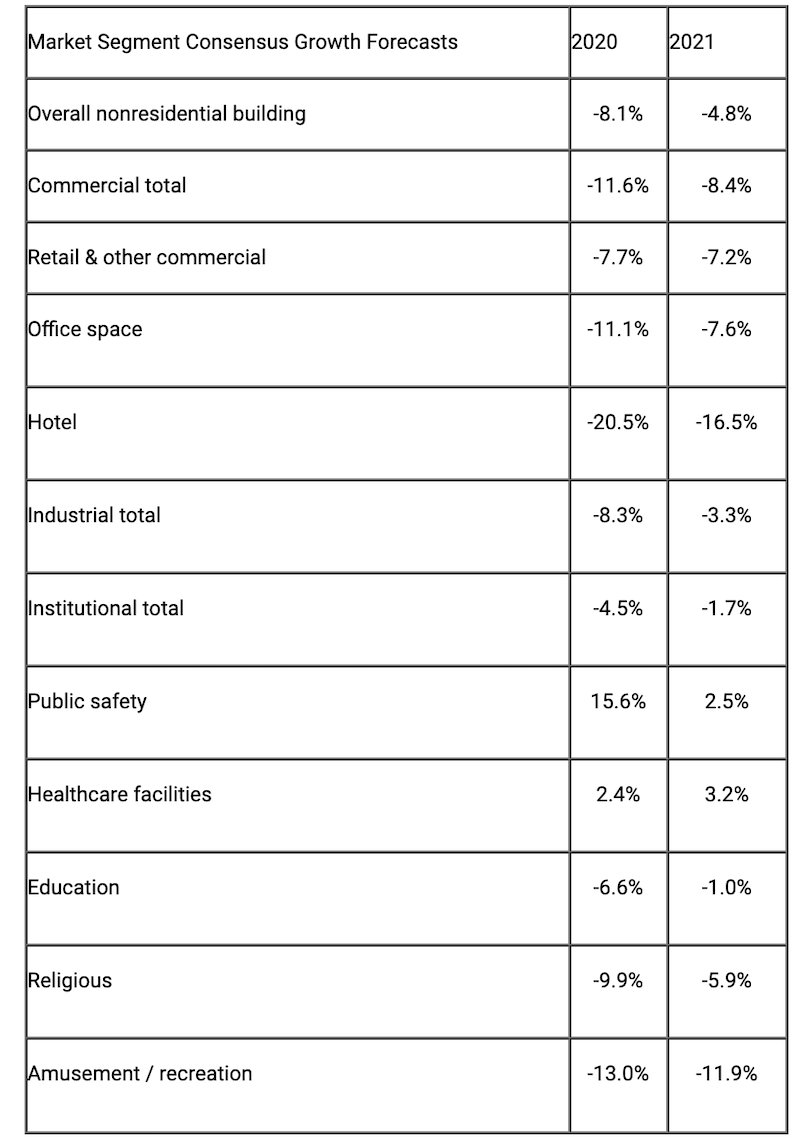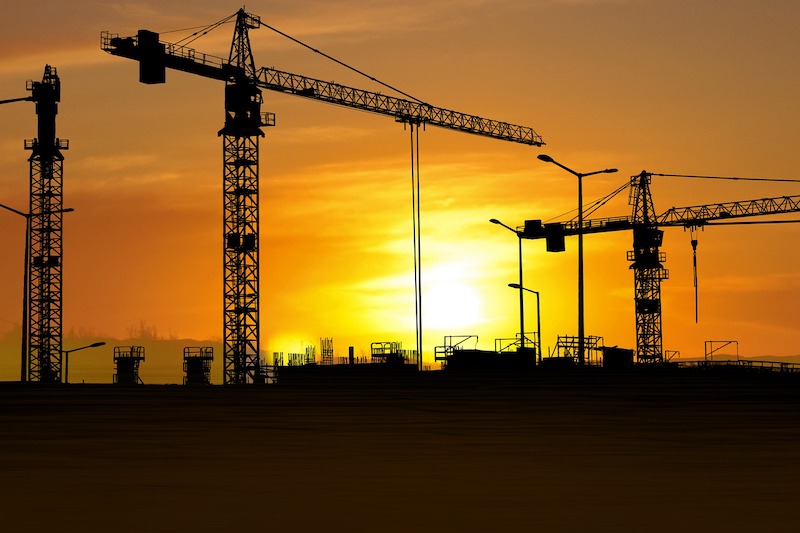As a result of the partially shutdown economy, businesses and organizations will continue to be hesitant to invest in modernized or new facilities, according to a mid-year update to the American Institute of Architects’ (AIA) Consensus Construction Forecast. The trend ends an almost decade-long expansion in construction spending.
The AIA Consensus Construction Forecast Panel—consisting of leading economic forecasters—projects spending on nonresidential facilities will decline just over eight percent this year, and another five percent in 2021. The commercial building sector is expected to be the hardest hit, with spending projected to decline almost 12% this year and another eight percent in 2021. The industrial sector is slated to see declines of five percent this year and three percent next year. While institutional buildings will fare the best on the nonresidential side, spending on these facilities is projected to drop almost five percent this year, and another two percent next.
“As much of the economy was shut down in mid-March to help limit the spread of the pandemic, there was hope that after the initial steep decline in economic activity there could be an almost equally quick recovery,” said AIA Chief Economist Kermit Baker, Hon. AIA, PhD. “However, since mid-June economic growth has stalled. The timing coincides with a spike in new Covid-19 cases across the country, and the resulting pause or roll-back of reopening plans in many states.”
Complete details on the latest Consensus Construction Forecast can be found on AIA’s website.

Related Stories
Market Data | Oct 31, 2016
Nonresidential fixed investment expands again during solid third quarter
The acceleration in real GDP growth was driven by a combination of factors, including an upturn in exports, a smaller decrease in state and local government spending and an upturn in federal government spending, says ABC Chief Economist Anirban Basu.
Market Data | Oct 28, 2016
U.S. construction solid and stable in Q3 of 2016; Presidential election seen as influence on industry for 2017
Rider Levett Bucknall’s Third Quarter 2016 USA Construction Cost Report puts the complete spectrum of construction sectors and markets in perspective as it assesses the current state of the industry.
Industry Research | Oct 25, 2016
New HOK/CoreNet Global report explores impact of coworking on corporate real rstate
“Although coworking space makes up less than one percent of the world’s office space, it represents an important workforce trend and highlights the strong desire of today’s employees to have workplace choices, community and flexibility,” says Kay Sargent, Director of WorkPlace at HOK.
Market Data | Oct 24, 2016
New construction starts in 2017 to increase 5% to $713 billion
Dodge Outlook Report predicts moderate growth for most project types – single family housing, commercial and institutional building, and public works, while multifamily housing levels off and electric utilities/gas plants decline.
High-rise Construction | Oct 21, 2016
The world’s 100 tallest buildings: Which architects have designed the most?
Two firms stand well above the others when it comes to the number of tall buildings they have designed.
Market Data | Oct 19, 2016
Architecture Billings Index slips consecutive months for first time since 2012
“This recent backslide should act as a warning signal,” said AIA Chief Economist, Kermit Baker.
Market Data | Oct 11, 2016
Building design revenue topped $28 billion in 2015
Growing profitability at architecture firms has led to reinvestment and expansion
Market Data | Oct 4, 2016
Nonresidential spending slips in August
Public sector spending is declining faster than the private sector.
Industry Research | Oct 3, 2016
Structure Tone survey shows cost is still a major barrier to building green
Climate change, resilience and wellness are also growing concerns.
Industry Research | Sep 27, 2016
Sterling Risk Sentiment Index indicates risk exposure perception remains stable in construction industry
Nearly half (45%) of those polled say election year uncertainty has a negative effect on risk perception in the construction market.

















